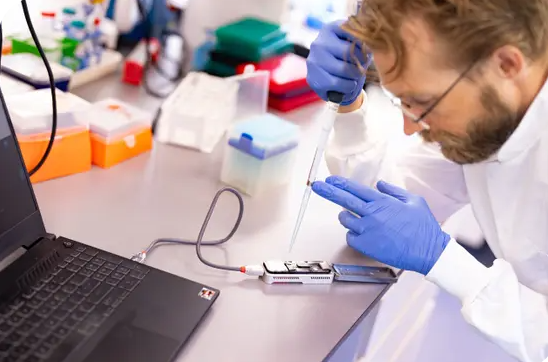
Image Credit: University Medical Center Utrecht
In the Netherlands, 1,400 adults and 150 children receive a diagnosis of a brain or spinal cord tumor each year. Surgery is frequently the initial course of therapy. Currently, during surgery, neurosurgeons are unsure of the specific type of brain tumor they are operating on or its level of aggressiveness. The pathologist will often only be able to provide a precise diagnosis one week following surgery after visually and molecularly examining the tumor tissue.
A brand-new artificial intelligence technique called a “deep-learning algorithm” has been created by researchers at UMC Utrecht that significantly expedites diagnosis.
Recently, Nanopore sequencing became available: a technology that helps to read DNA in real time. For this, we developed an algorithm that is equipped to learn from millions of simulated realistic ‘DNA snapshots’. With this algorithm, which we named ‘Sturgeon’, we can identify the tumor type within 20 to 40 minutes. And that is fast enough to directly adjust the surgical strategy, if necessary.
Jeroen de Ridder, Research Group Leader, University Medical Center Utrecht
A “bioinformatics lab” run by Jeroen has 15 computational scientists working in it. His team analyzes intricate molecular information using the most recent advances in computer science, including machine learning and artificial intelligence (AI). For instance, such information is extracted from patient tumor tissue that is gathered in biobanks.
de Ridder added, “Modern technologies allow us to make enormously complex and rich measurements of, for instance, tumor biopsies. How do we ensure that that highly complex collection of measurement data leads to new fundamental insights about cancer? And how can we use that collected data to better diagnose and treat cancer?”
“To answer these questions, it is essential to design algorithms that can analyze large collections of molecular data, and that is exactly what bioinformatics focuses on. Although our research is fundamental in nature, we are driven to make sure that our findings will have a positive effect on patients’ lives,” de Ridder noted.
Tested and Trained with Biobank
de Ridder and his group analyze enormous volumes of data more quickly and accurately. They worked together with Bastiaan Tops, head of the Laboratory for Pediatric Oncology at the Princess Máxima Center, on this particular novel approach.
With assistance from the KiKa foundation, Bastiaan was able to combine modern technology with operating room requirements. The Princess Máxima Center has long maintained a sizable biobank; thus, he gave the copious data that was required to create the algorithm. This biobank keeps tissue from children who have brain tumors among other things. This biobank was used to train and test the algorithm.
That we can now determine the type of brain tumor as soon as during surgery shows how technology can speed up diagnostics. And how we can use an existing biobank to develop a new technology, with great impact for future patients.
Bastiaan Tops, Head, Laboratory for Pediatric Oncology, Princess Máxima Center
Used During Surgery
As a result, the entire process—from extracting the tissue in the operating room to identifying the tumor type—was repeated several times during actual brain surgeries. This occurred with children in Utrecht and with adults in Amsterdam. The entire treatment should take between 60 and 90 minutes.
The Princess Máxima Center has determined that the technique’s results are sufficiently trustworthy and is currently using it for children whose surgical approach can be determined by the results. The method will also be used regularly by Amsterdam UMC to aid in diagnosis.
During surgery, a small remnant of tumor tissue is sometimes deliberately left behind to prevent neurological damage. But if it will later turn out, for example, that the tumor is very aggressive, a second surgery may still be necessary to remove that last remnant. This will again create risks and stress for patients and their families. This can be avoided now because we will already know during the first surgery what type of tumor we are dealing with.
Eelco Hoving, Pediatric Neurosurgeon and Clinical Director, Neuro-Oncology, Máxima Center
Comparative Research
More study is required to employ the new method structurally and more broadly. For instance, the algorithm needs to include additional tumor types. International standards will be fulfilled in this way, enabling data comparison.
Additionally, in cooperation with other (inter)national institutes, the results of the novel and current (lengthier) methods will be further compared. This should make it evident if the new approach will also improve patients’ quality of life over time.
de Ridder concluded, “It is truly exciting that we have been able to actually make the step into clinical practice by combining all areas of expertise, from basic researchers to pathologists and surgeons. By doing so, we can help surgeons to optimize the outcome of brain tumor surgery.”
Journal Reference
Vermeulen, C., et al. (2023) Ultra-fast deep-learned CNS tumor classification during surgery. Nature. doi:10.1038/s41586-023-06615-2